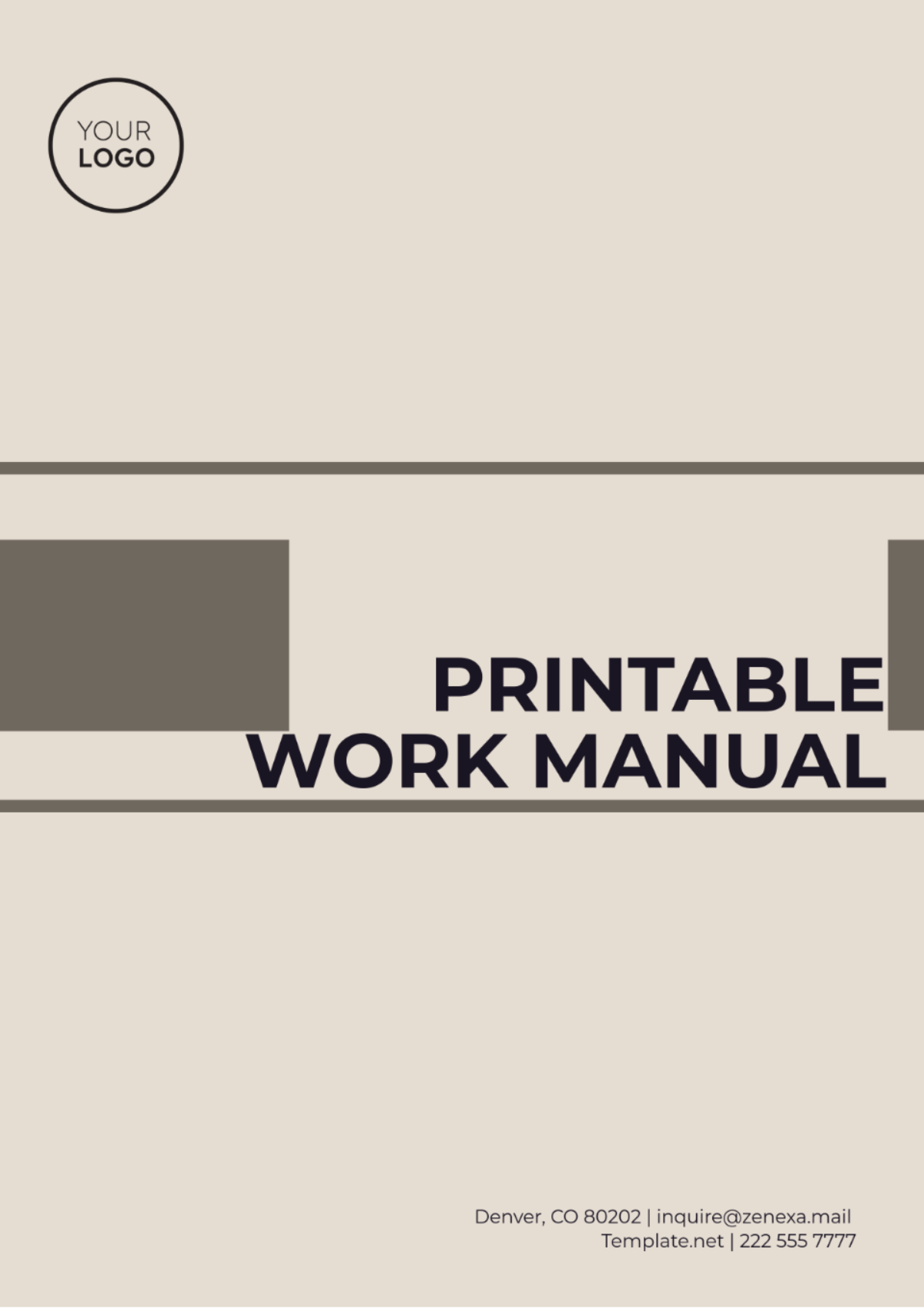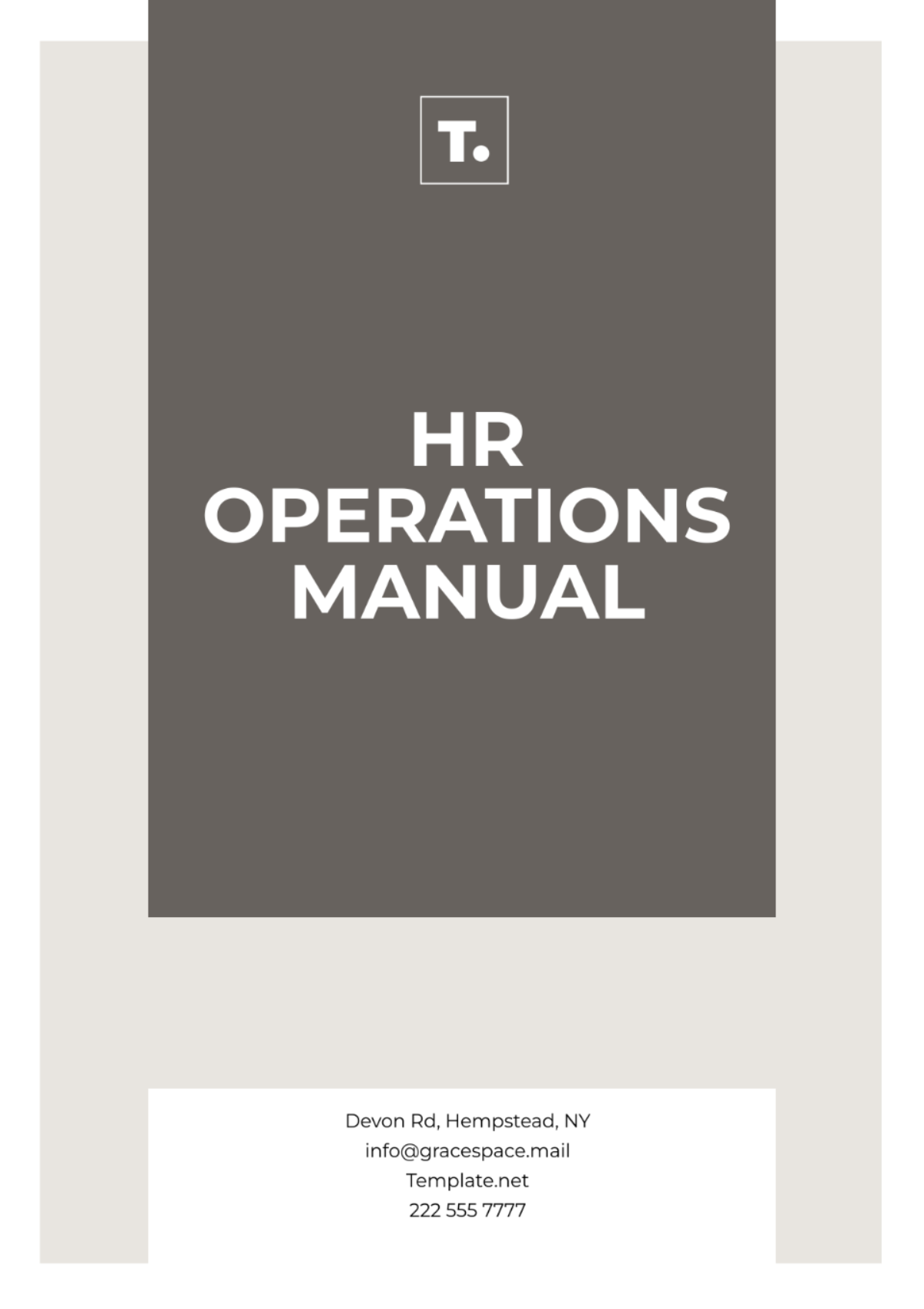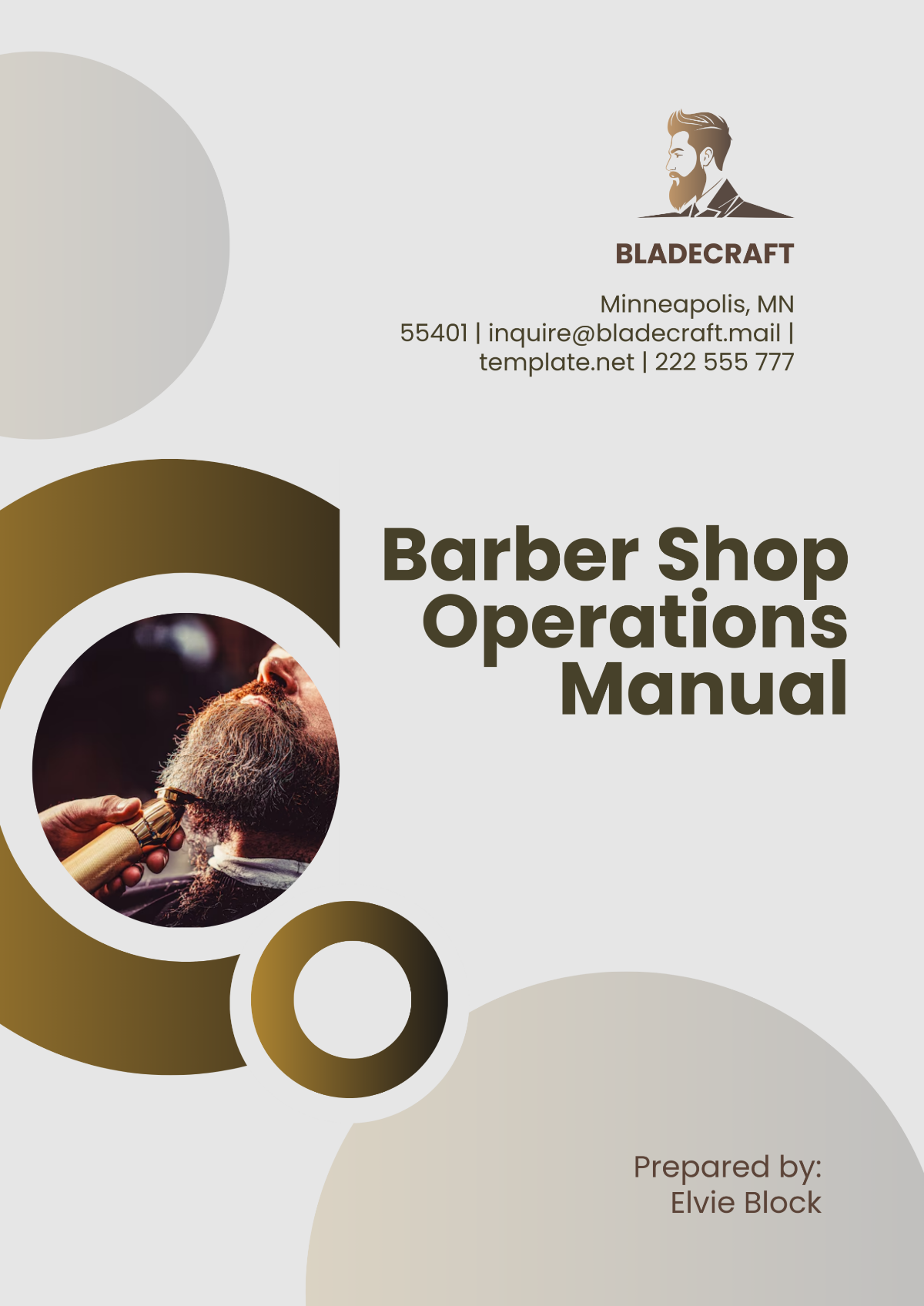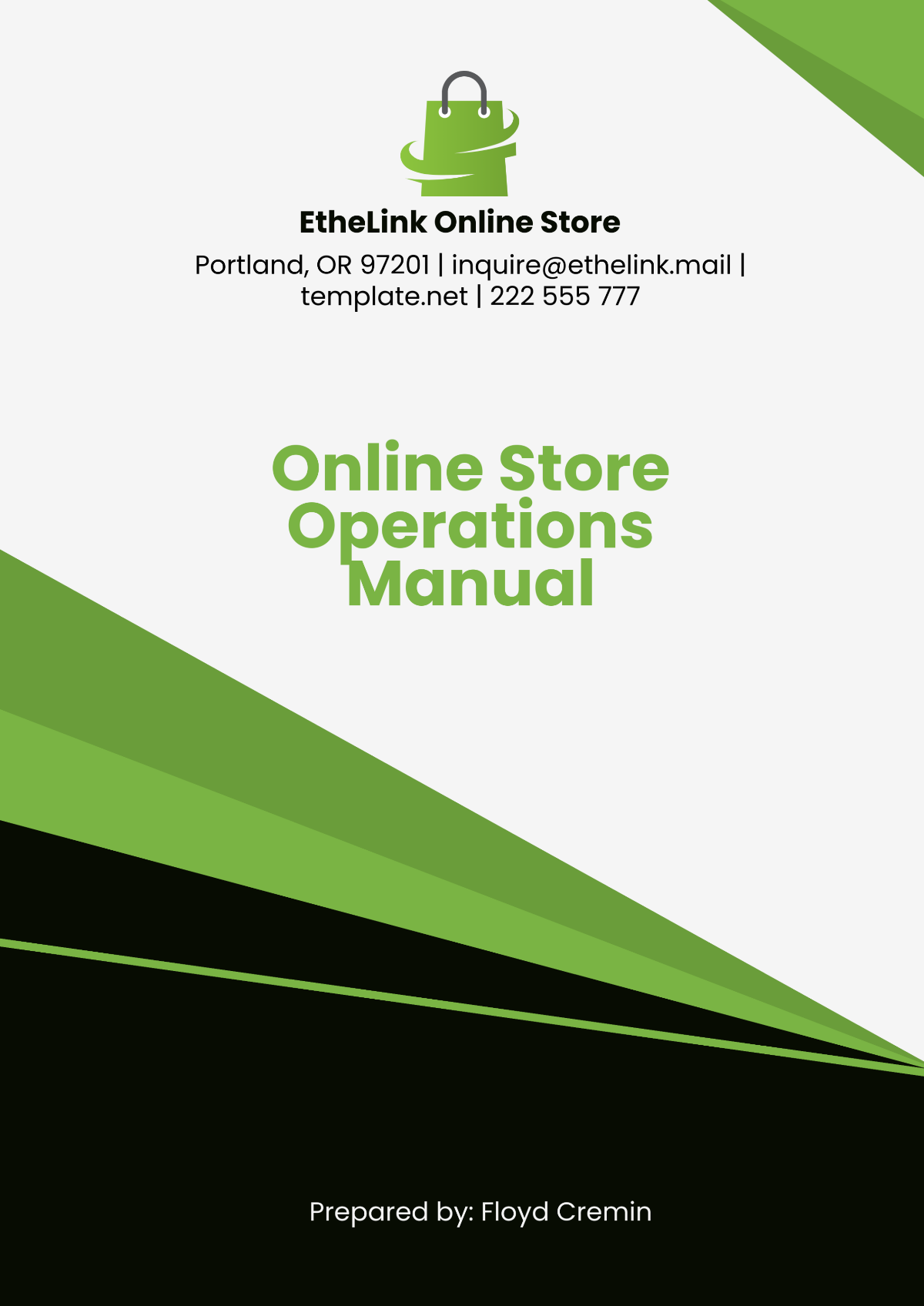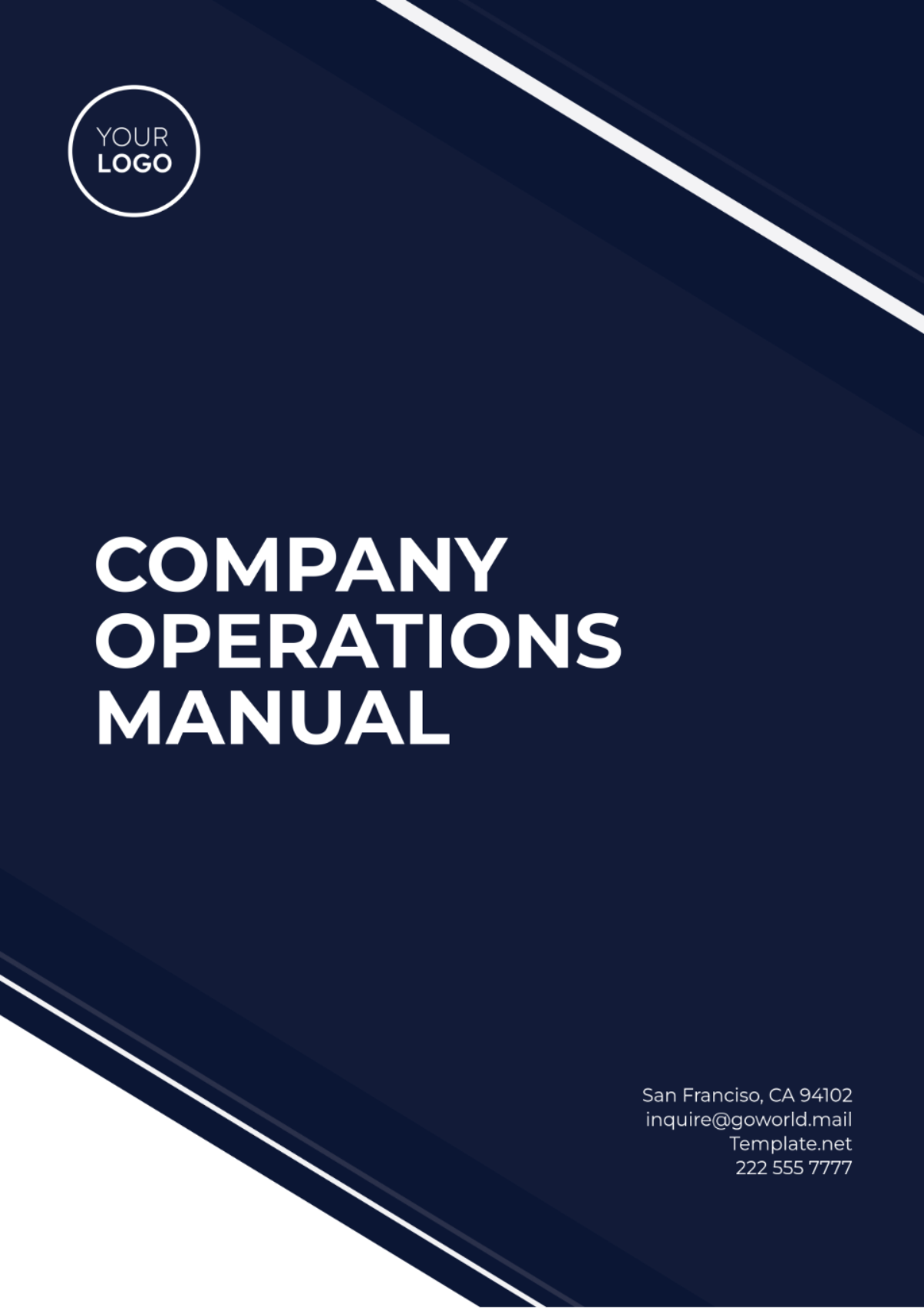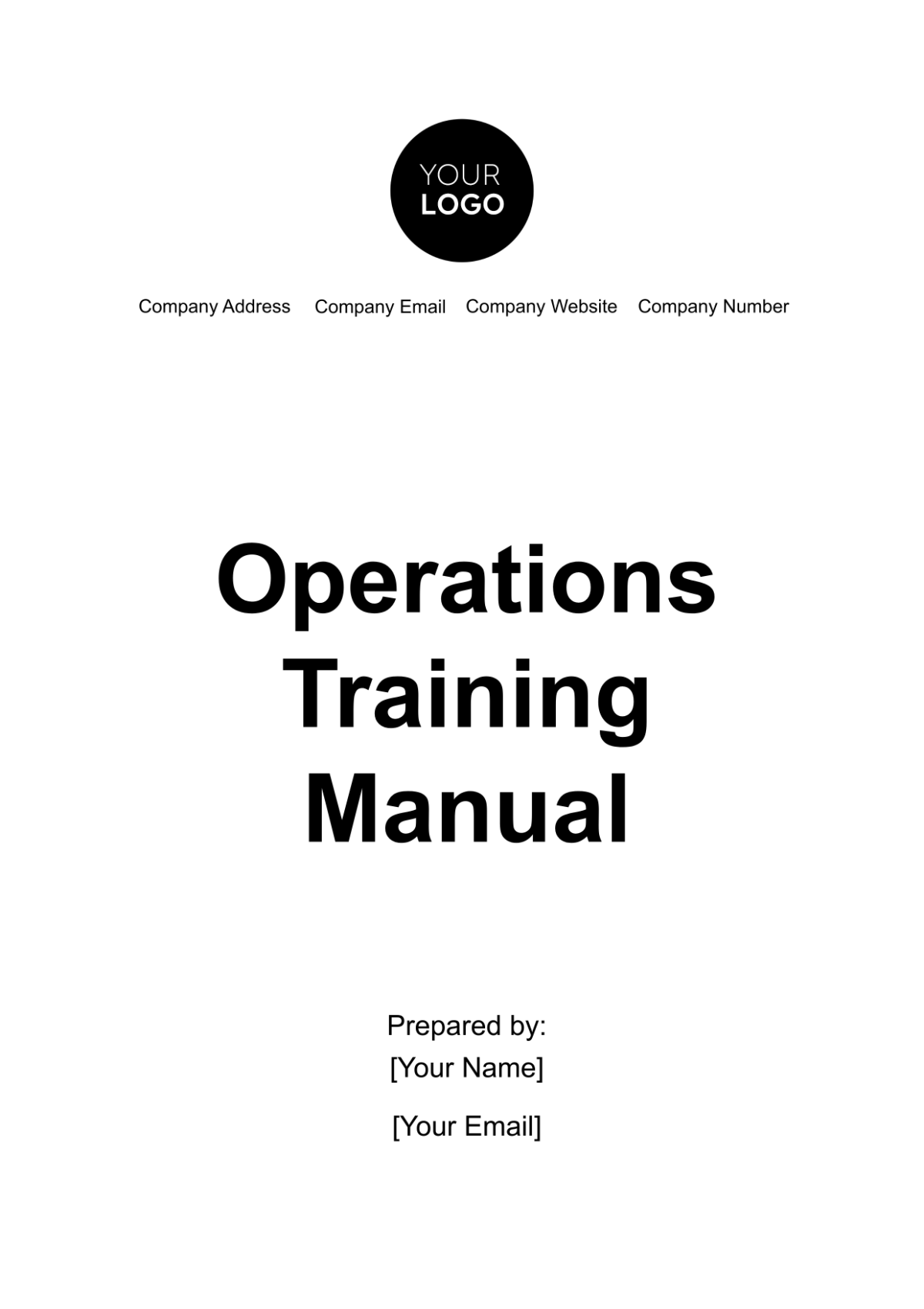Grocery Store Retail Operations Manual Sample
I. Introduction
A. Purpose of the Manual
This manual serves as a comprehensive guide for the day-to-day management and operation of our grocery store, ensuring consistency and efficiency in all activities. It outlines best practices, operational procedures, and employee responsibilities to support smooth store functioning. By adhering to these guidelines, we aim to enhance the overall shopping experience and maintain high standards of service.
B. Scope and Applicability
The manual is applicable to all staff members, including store managers, department heads, and frontline employees, providing a uniform approach to store operations. It covers a wide range of topics from inventory management to customer service, ensuring that all employees understand their roles and responsibilities. The guidelines are designed to be adaptable to various store sizes and formats, maintaining relevance across different operational scenarios.
C. Overview of Store Operations
Our grocery store operates with a focus on delivering high-quality products and exceptional customer service. Key operational areas include inventory management, staff training, and customer engagement, each contributing to a seamless shopping experience. The store is committed to maintaining cleanliness, safety, and efficiency to support both customer satisfaction and operational success.
II. Store Layout and Design
A. Store Layout Plan
Departmental Arrangement
The store is organized into distinct departments such as Produce, Dairy, Meat, Bakery, and Dry Goods to streamline shopping and improve customer convenience. Each department is strategically positioned to facilitate an intuitive shopping experience, with high-traffic areas and specialty sections designed for easy access. This arrangement helps in managing store traffic and enhances product visibility.
Customer Flow
To optimize customer flow, aisles are arranged to guide shoppers through key sections, encouraging exploration of various departments. High-demand items are placed strategically to ensure they are easily accessible while directing foot traffic through the entire store. Clear signage and well-defined pathways contribute to a smoother and more enjoyable shopping journey.
Signage and Branding
Effective signage is employed to guide customers to different sections and highlight promotions, ensuring a clear and visually appealing shopping environment. Consistent branding elements, including logos and color schemes, reinforce the store’s identity and create a cohesive shopping experience. Signage is regularly updated to reflect new products, sales, and seasonal changes.
B. Product Placement Strategies
Shelf Organization
Products are organized by category and brand, with strategic placement to maximize visibility and sales potential. High-margin items are positioned at eye level to capture customer attention, while staple products are placed in easily accessible locations. Regular reviews of shelf organization ensure optimal product placement and inventory turnover.
End-Cap Displays
End-caps are utilized for promotional displays and high-turnover items, designed to attract attention and drive impulse purchases. Seasonal and limited-time offers are prominently featured on end-caps to capitalize on customer interest and increase sales. These displays are frequently updated to reflect current promotions and trends.
Seasonal and Promotional Areas
Dedicated areas for seasonal products and promotions are set up to highlight special offers and seasonal items, enhancing their visibility. These areas are strategically located to attract customer attention and encourage additional purchases. Promotions are planned and executed to align with holidays, events, and changing customer preferences.
III. Inventory Management
A. Ordering Procedures
Supplier Selection
Suppliers are evaluated based on criteria such as product quality, reliability, and cost-effectiveness, ensuring that we partner with reputable vendors. Regular assessments of supplier performance help maintain high standards and address any issues promptly. Contracts are reviewed periodically to ensure terms remain favorable and competitive.
Reorder Levels
Reorder levels are established for each product to maintain optimal inventory levels and prevent stockouts. Automated systems generate alerts when stock reaches predetermined thresholds, prompting timely reordering. Regular analysis of sales trends and seasonal variations helps adjust reorder levels to meet changing demand.
Order Placement and Tracking
Orders are placed using a centralized inventory management system that tracks quantities, delivery schedules, and supplier performance. Real-time tracking allows for monitoring order status and addressing any issues that arise during the delivery process. Accurate documentation of orders and receipts ensures effective inventory control.
B. Receiving and Storage
Delivery Procedures
Deliveries are inspected upon arrival to verify that they match purchase orders and are free from damage. Any discrepancies or damaged items are reported to suppliers immediately to facilitate returns or replacements. A systematic approach to receiving ensures that inventory is accurately updated and stored properly.
Quality Control Checks
Quality control checks are conducted on all incoming products to ensure they meet the store’s standards for freshness and safety. Products are examined for signs of damage, spoilage, or contamination before being accepted and shelved. Non-compliant items are rejected or returned to the supplier.
Stock Rotation (FIFO/LIFO)
The First-In-First-Out (FIFO) method is applied to perishable goods to ensure that older stock is sold before newer inventory. For non-perishable items, the Last-In-First-Out (LIFO) method may be used to manage inventory effectively. Regular monitoring ensures compliance with stock rotation procedures.
C. Inventory Control
Regular Stock Audits
Weekly stock audits are conducted to reconcile physical inventory with recorded levels, identifying and addressing discrepancies. Audits help ensure accuracy in inventory records and prevent potential losses. Results are analyzed to make informed decisions about inventory management and ordering practices.
Handling Overstock and Out-of-Stocks
Overstock situations are managed by adjusting future orders and promoting slow-moving products to clear excess inventory. Out-of-stock items are addressed by expediting orders and implementing contingency plans to minimize disruption. Effective communication with suppliers helps resolve stock issues promptly.
Inventory Management Systems
An advanced inventory management system is used to track stock levels, sales data, and order history. The system supports real-time updates and provides analytical tools for inventory optimization. Regular updates and system maintenance ensure data accuracy and operational efficiency.
IV. Customer Service
A. Customer Interaction Standards
Greeting and Assistance
Employees are trained to greet customers with a warm and friendly demeanor, offering assistance as needed to enhance the shopping experience. Knowledgeable staff provide helpful information about products and store services. Positive interactions contribute to customer satisfaction and repeat business.
Handling Complaints and Returns
Complaints and returns are handled with professionalism and empathy, aiming to resolve issues to the customer’s satisfaction. A clear and fair return policy is communicated to customers, ensuring transparency and consistency. Feedback is collected and analyzed to improve service quality and address recurring issues.
Special Requests and Accommodations
Special requests, such as locating specific products or accommodating special needs, are handled promptly and efficiently. Employees are empowered to assist with unique customer requirements and provide tailored solutions. Documentation of special requests helps improve future service and inventory planning.
B. Service Excellence Programs
Customer Feedback Collection
Feedback is gathered through various channels, including surveys, suggestion boxes, and online reviews, to gain insights into customer experiences. Regular analysis of feedback identifies areas for improvement and highlights strengths. Action plans are developed based on feedback to enhance overall service quality.
Service Training for Employees
Ongoing training programs focus on enhancing customer service skills, including communication, problem-solving, and product knowledge. Training sessions are interactive and incorporate real-world scenarios to build practical skills. Continuous assessment ensures that employees meet service excellence standards.
Mystery Shopper Programs
Mystery shoppers evaluate store performance from a customer’s perspective, assessing factors such as service quality, store cleanliness, and product availability. Reports from mystery shoppers provide objective insights and actionable recommendations. Findings are used to implement improvements and recognize high-performing employees.
V. Employee Management
A. Recruitment and Hiring
Job Descriptions and Requirements
Detailed job descriptions outline key responsibilities, required qualifications, and skills needed for each role, ensuring clarity for potential candidates. Accurate descriptions help attract suitable applicants and align expectations. Regular updates to job descriptions reflect changes in job responsibilities and store needs.
Interview and Selection Process
The interview process involves structured questions and assessments to evaluate candidates' skills, experience, and cultural fit. Selection decisions are based on a combination of qualifications, interview performance, and reference checks. A fair and consistent process ensures the hiring of qualified and compatible staff.
B. Training and Development
Onboarding Process
The onboarding process includes comprehensive orientation, training on store policies and procedures, and introductions to team members. New hires receive resources and support to help them integrate smoothly into their roles. Initial training focuses on essential tasks and company culture.
Ongoing Training Programs
Employees participate in regular training sessions to enhance their skills and stay updated on industry trends. Training topics include customer service, safety protocols, and new product information. Continued development opportunities support career growth and contribute to overall store success.
Performance Evaluation
Performance evaluations are conducted periodically to assess employee achievements, set goals, and provide constructive feedback. Evaluations help identify strengths and areas for improvement, guiding professional development. Employee performance is aligned with store objectives and customer service standards.
C. Scheduling and Attendance
Shift Scheduling
Shift schedules are created to ensure adequate staffing levels during peak and off-peak hours, balancing employee availability and store needs. Scheduling tools help manage shifts, vacations, and time-off requests. Flexibility is provided to accommodate employee preferences and personal commitments.
Timekeeping Procedures
Employees use time clocks or digital systems to record their work hours accurately. Timekeeping procedures include guidelines for clocking in and out, reporting discrepancies, and handling overtime. Accurate timekeeping ensures proper payroll processing and adherence to labor laws.
Attendance Policies
Attendance policies outline expectations for punctuality, absenteeism, and reporting procedures for missed shifts. Employees are required to notify management in advance of absences and provide valid reasons. Consistent enforcement of attendance policies helps maintain operational efficiency and staff reliability.
VI. Health and Safety
A. Store Cleanliness and Maintenance
Daily Cleaning Procedures
Daily cleaning tasks are assigned to specific staff members to ensure all areas of the store are maintained to a high standard of hygiene. Checklists are used to track completion and ensure all cleaning duties, including floors, shelves, and restrooms, are performed consistently.
Equipment Maintenance
Regular maintenance schedules are established for all store equipment, including refrigeration units, ovens, and cash registers, to ensure optimal performance and prevent breakdowns. Preventive maintenance is performed to extend the life of equipment and minimize disruptions to store operations.
Waste Management
Waste is separated into recyclables, composts, and general waste to adhere to environmental regulations and minimize the store’s environmental impact. Waste disposal procedures are followed to ensure proper handling and minimize any potential hazards.
B. Food Safety Protocols
Handling and Storage of Perishables
Perishable items, such as meat, dairy, and produce, are stored at appropriate temperatures and regularly monitored to prevent spoilage. Correct storage practices, including proper packaging and rotation, are crucial to maintaining product freshness and safety.
Hygiene Standards
Employees are required to adhere to strict hygiene standards, including frequent handwashing, wearing gloves, and maintaining clean uniforms. Regular training and audits ensure compliance with hygiene practices to prevent contamination and ensure customer safety.
Sanitation Practices
Sanitation practices involve regular cleaning and disinfecting of food preparation areas and equipment to prevent cross-contamination. Cleaning schedules and procedures are documented to maintain high standards of cleanliness and ensure a safe environment for food handling.
C. Safety Procedures
Emergency Exits and Signage
Emergency exits are clearly marked, unobstructed, and easily accessible to ensure a safe and efficient evacuation in case of an emergency. Regular drills are conducted to familiarize employees with evacuation procedures and reinforce safety protocols.
First Aid and Emergency Response
First aid kits are strategically placed throughout the store, and employees are trained in basic first aid and CPR to handle minor injuries and medical emergencies. An emergency response plan is in place, detailing procedures for various scenarios such as accidents, fires, and medical incidents.
Accident Reporting and Investigation
All accidents and incidents are reported promptly using standardized forms to document details and actions taken. Investigations are conducted to determine the cause of accidents and implement corrective measures to prevent future occurrences.
VII. Cash Handling and Transactions
A. Cash Register Procedures
Register Operation
Employees are trained to operate cash registers efficiently, ensuring accurate processing of transactions and handling of cash. Procedures are in place for checking and verifying the accuracy of each transaction to minimize errors.
Cash Drops and Reconciliation
Regular cash drops are performed throughout the day to secure cash and reduce the risk of theft. At the end of each shift, cash registers are reconciled with sales records to verify accuracy and resolve any discrepancies.
B. Payment Methods
Credit/Debit Card Processing
Transactions involving credit and debit cards are processed through secure, PCI-compliant systems to protect customer data. Employees are trained to handle card transactions accurately and troubleshoot any issues that may arise.
Mobile Payments
Mobile payment options, such as digital wallets and contactless payments, are accepted to provide customers with convenient and secure payment methods. Employees are familiar with mobile payment systems and are able to assist customers with their transactions.
C. Financial Controls
Fraud Prevention
Fraud prevention measures include monitoring for suspicious transactions, implementing secure payment processing systems, and conducting regular audits. Employee training focuses on recognizing and reporting potential fraud indicators to safeguard store assets.
Daily Cash Reconciliation
At the end of each business day, a reconciliation process verifies that cash and electronic transactions match the recorded sales figures. Any discrepancies are investigated and resolved promptly to ensure financial accuracy and integrity.
VIII. Marketing and Promotions
A. In-Store Promotions
Promotional Displays
Promotional displays are designed to attract customer attention and highlight special offers, with strategically placed signage to maximize visibility. Displays are regularly updated to feature new promotions and seasonal items, encouraging increased sales.
Sales Events
Sales events are organized to drive customer traffic and boost sales, such as holiday sales or clearance events. These events are promoted through in-store signage, social media, and email campaigns to maximize reach and effectiveness.
B. Customer Loyalty Programs
Rewards and Discounts
Loyalty programs offer rewards and discounts to repeat customers, encouraging continued patronage and enhancing customer satisfaction. The program is designed to be user-friendly, with clear communication about how rewards are earned and redeemed.
Membership Benefits
Membership benefits include exclusive offers, early access to sales, and personalized discounts based on shopping history. Members are regularly updated on new benefits and offers through direct communication channels, such as newsletters and app notifications.
C. Advertising and Outreach
Local Advertising
Local advertising efforts include print ads, radio spots, and community sponsorships to increase store visibility within the local market. Advertising campaigns are designed to target specific demographics and highlight store promotions or events.
Social Media and Online Presence
The store maintains an active presence on social media platforms, using these channels to engage with customers and share updates, promotions, and store news. Online marketing strategies include targeted ads and content creation to build brand awareness and drive online traffic.
IX. Maintenance and Equipment
A. Equipment Maintenance
Routine Checks and Repairs
Routine checks are scheduled to inspect and maintain store equipment, including refrigeration units and cash registers, to ensure they operate efficiently. Scheduled maintenance and prompt repairs minimize downtime and operational disruptions.
Vendor and Service Contracts
Service contracts with equipment vendors are managed to ensure timely maintenance and repairs. Performance of service providers is reviewed regularly to ensure quality and reliability of maintenance services.
B. Facility Management
Building Maintenance
Building maintenance includes regular inspections and repairs to address any issues with the facility, such as plumbing or electrical problems. Maintenance schedules are created to address routine tasks and unforeseen issues promptly.
Energy and Utilities Management
Energy usage is monitored to identify opportunities for efficiency improvements and cost savings. Utility bills are reviewed regularly, and conservation measures are implemented to reduce energy consumption and operational costs.
X. Emergency Procedures
A. Emergency Contact Information
Emergency Contact List
A comprehensive list of emergency contacts, including local emergency services, management, and key personnel, is maintained and readily accessible. This list ensures quick communication during emergencies and supports efficient response efforts.
Contact Updates
Emergency contact information is reviewed and updated regularly to ensure accuracy and relevance. Employees are informed of any changes to the contact list and procedures for reaching emergency contacts.
B. Evacuation Procedures
Fire Drills and Safety
Regular fire drills are conducted to familiarize employees with evacuation routes and safety procedures, ensuring preparedness for actual emergencies. Fire safety equipment, such as extinguishers and alarms, is regularly inspected and maintained.
Natural Disasters
Procedures for responding to natural disasters, such as severe weather or earthquakes, are outlined and communicated to all employees. Emergency kits and supplies are stored in accessible locations to support employees and customers during such events.
C. Incident Reporting
Reporting Procedures
Procedures for reporting incidents, including accidents, safety breaches, and other emergencies, are clearly defined to ensure timely documentation and response. Employees are trained to follow these procedures and use designated forms for reporting.
Documentation and Follow-Up
Detailed documentation of incidents is required to track occurrences and implement corrective actions. Follow-up procedures include reviewing incidents, assessing responses, and making necessary adjustments to improve safety and operational protocols.



